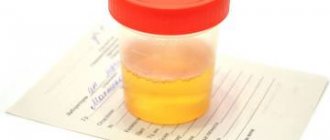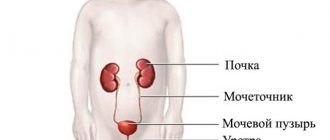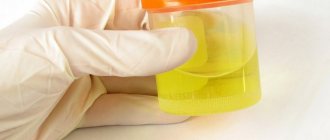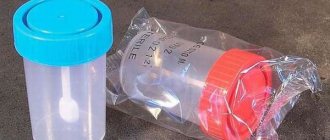Urinalysis is a routine, painless test. All products of our metabolism pass through the kidneys and bladder. The quality of urine and the ratio of the components of this biological fluid will give the doctor a clear picture of what is happening in the body.
But patients are always in a hurry and ask the laboratory assistant whether they can collect urine in the evening for analysis. Like, so as not to waste precious time in the morning.
The answer to this question depends on the type of study. Most studies involve working only with fresh urine. But there are tests in which you will have to collect biological fluid within 24 hours and hand over the fluid from yesterday.
Urinalysis - can it be collected in the evening and for what studies?
Urinalysis is a routine, painless test. All products of our metabolism pass through the kidneys and bladder. The quality of urine and the ratio of the components of this biological fluid will give the doctor a clear picture of what is happening in the body.
But patients are always in a hurry and ask the laboratory assistant whether they can collect urine in the evening for analysis. Like, so as not to waste precious time in the morning.
The answer to this question depends on the type of study. Most studies involve working only with fresh urine. But there are tests in which you will have to collect biological fluid within 24 hours and hand over the fluid from yesterday.
Sample collection rules
For studies such as general urine analysis, Nechiporenko analysis, and bacterial culture, only the first morning urine should be collected.
During the night, salts and other components of urine, including pathogenic ones, accumulate in the bladder. The results of the study of such urine will be the most reliable.
In yesterday's portion of biological fluid, overnight, even in a sterile container and stored in a refrigerator, processes of protein compounds will decompose and opportunistic flora will multiply. The results of such a study are not informative and can lead to errors in diagnosis and patient management tactics.
Preparation for collecting biological fluid for general urine analysis, Nechiporenko analysis, and bacterial culture begins one day before sample collection.
Methods for preparing and collecting urine:
- Eliminate spicy, smoked, salty foods from your diet.
- Avoid foods that may discolor the sample in an unnatural color. These are blueberries, beets, vitamin preparations. Maintain your usual drinking regimen.
- In the morning, toilet the genitals without using special antiseptics. Simply wash with soap and water.
- For women, close the vaginal opening with a cotton swab.
- Explain the sampling technique clearly to the children. For analysis according to Nechiporenko, an average portion of urine is required, for other studies - a full portion.
- Urinate into a sterile container. Kids can go to the potty. But first it should be thoroughly washed and doused with boiling water. The urine is then poured into a sterile container.
- Sign the container - full name of the child or adult, date and time of collection.
- Deliver the sample to the laboratory within 2 hours.
Sample collection rules
For studies such as general urine analysis, Nechiporenko analysis, and bacterial culture, only the first morning urine should be collected.
During the night, salts and other components of urine, including pathogenic ones, accumulate in the bladder. The results of the study of such urine will be the most reliable.
In yesterday's portion of biological fluid, overnight, even in a sterile container and stored in a refrigerator, processes of protein compounds will decompose and opportunistic flora will multiply. The results of such a study are not informative and can lead to errors in diagnosis and patient management tactics.
Preparation for collecting biological fluid for general urine analysis, Nechiporenko analysis, and bacterial culture begins one day before sample collection.
Methods for preparing and collecting urine:
- Eliminate spicy, smoked, salty foods from your diet.
- Avoid foods that may discolor the sample in an unnatural color. These are blueberries, beets, vitamin preparations. Maintain your usual drinking regimen.
- In the morning, toilet the genitals without using special antiseptics. Simply wash with soap and water.
- For women, close the vaginal opening with a cotton swab.
- Explain the sampling technique clearly to the children. For analysis according to Nechiporenko, an average portion of urine is required, for other studies - a full portion.
- Urinate into a sterile container. Kids can go to the potty. But first it should be thoroughly washed and doused with boiling water. The urine is then poured into a sterile container.
- Sign the container - full name of the child or adult, date and time of collection.
- Deliver the sample to the laboratory within 2 hours.
The container can be stored for 2 hours after collection in the refrigerator. Freezing or heating the urine of a child or adult is strictly prohibited.
Urinalysis - can it be collected in the evening and for what studies?
Urinalysis is a routine, painless test. All products of our metabolism pass through the kidneys and bladder. The quality of urine and the ratio of the components of this biological fluid will give the doctor a clear picture of what is happening in the body.
But patients are always in a hurry and ask the laboratory assistant whether they can collect urine in the evening for analysis. Like, so as not to waste precious time in the morning.
The answer to this question depends on the type of study. Most studies involve working only with fresh urine. But there are tests in which you will have to collect biological fluid within 24 hours and hand over the fluid from yesterday.
Sample collection rules
For studies such as general urine analysis, Nechiporenko analysis, and bacterial culture, only the first morning urine should be collected.
During the night, salts and other components of urine, including pathogenic ones, accumulate in the bladder. The results of the study of such urine will be the most reliable.
In yesterday's portion of biological fluid, overnight, even in a sterile container and stored in a refrigerator, processes of protein compounds will decompose and opportunistic flora will multiply. The results of such a study are not informative and can lead to errors in diagnosis and patient management tactics.
Preparation for collecting biological fluid for general urine analysis, Nechiporenko analysis, and bacterial culture begins one day before sample collection.
Methods for preparing and collecting urine:
- Eliminate spicy, smoked, salty foods from your diet.
- Avoid foods that may discolor the sample in an unnatural color. These are blueberries, beets, vitamin preparations. Maintain your usual drinking regimen.
- In the morning, toilet the genitals without using special antiseptics. Simply wash with soap and water.
- For women, close the vaginal opening with a cotton swab.
- Explain the sampling technique clearly to the children. For analysis according to Nechiporenko, an average portion of urine is required, for other studies - a full portion.
- Urinate into a sterile container. Kids can go to the potty. But first it should be thoroughly washed and doused with boiling water. The urine is then poured into a sterile container.
- Sign the container - full name of the child or adult, date and time of collection.
- Deliver the sample to the laboratory within 2 hours.
The container can be stored for 2 hours after collection in the refrigerator. Freezing or heating the urine of a child or adult is strictly prohibited.
24-hour urine tests
Some diseases require studies that take into account total diuresis during the day. The result of such tests is the total amount of the desired substance that passes through the urinary system within 24 hours. With the help of such studies, oxalates, urates, phosphates, hormones are identified, and the concentration function of the kidneys is determined.
Such tests should only be taken as prescribed by a doctor if you have symptoms.
To collect a daily portion of biological fluid, you need to prepare a container of the appropriate size.
Sample collection method:
- The first portion of urine in the morning is drained.
- All subsequent urinations are carried out in a prepared container.
- The next morning, the first morning portion of urine is also poured into the prepared container. Shake the urine sample and pour a 100 ml portion into a sterile container. Measure total daily urine output.
- Deliver to the laboratory within 2 hours. The container should contain information about the total amount of urine per day and data about the patient.
To determine the concentration function of the kidneys, a Zimnitsky analysis is performed. In this case, the patient collects urine into a container every 3–4 hours. In such a way that during the day a total portion of 6–8 jars of urine is collected. After urination, the containers are stored in the refrigerator. If the patient suffers from polyuria, then each portion of biological fluid is collected in a separate container and signed.
Additionally, the patient calculates the total volume of fluid consumed during the day.
It is possible to collect urine for analysis in the evening, but only for specific studies. Therefore, check with your doctor about the method of collecting the sample. Only in this case the laboratory guarantees you a reliable result.
Is it possible to collect a child’s urine in the evening - All about kidneys
Have you been trying to cure your KIDNEYS for many years?
Head of the Institute of Nephrology: “You will be amazed at how easy it is to heal your kidneys just by taking it every day...
Read more "
How long can urine be stored for analysis? Each of us has been tested at least once, but have we had to think about this question? For the results to be reliable, it is necessary to correctly collect the biomaterial and preserve it in its original form. The method of laboratory research, which the attending physician must first resort to, can guide the path of a true specialist in diagnosing the disease. This technique is safe and recommended for all patients without exception.
- Permissible shelf life of urine
- Rules for collecting urine for laboratory testing
- Peculiarities of collecting urine output in infants of the first year of life
Permissible shelf life of urine
How long can urine be stored from the moment it is collected in a special jar until it reaches the laboratory? First you need to understand what urine is. It is a secondary product of human life and its organ system. It consists of 96.9% aqueous medium, and the rest is classified as nitrogenous products of the breakdown of proteins and salts (chlorides, sulfates, phosphates).
OUR READERS RECOMMEND!
Our readers successfully use Renon Duo to treat kidneys. Seeing how popular this product is, we decided to bring it to your attention. Read more here...
A short time is enough for the organic substances to evaporate. They love to connect with the external environment, as well as with each other, changing qualities.
After 90 - 120 minutes, urine completely acquires a different composition, therefore, it becomes practically unsuitable for making a reliable diagnosis and conducting clinical studies. Therefore, the journey from the toilet to the medical facility should not exceed 2 hours.
Urine can be stored at room temperature. It is forbidden to place a jar of biomaterial in the refrigerator, except for the one in which urine was collected for analysis according to Zimnitsky.
A number of conditions must be met here:
- We place the container on the bottom shelf of the refrigerator, where the temperature does not exceed +4 degrees.
- It is better to use a large glass jar.
- Mix the daily urine and separate the required amount into a sterile container for analysis.
- Deliver a single portion to the laboratory as soon as possible.
When referring a patient for testing, the doctor gives recommendations on how to store urine for analysis. The manual describes everything in detail, therefore, if all requirements are met, the result should be reliable.
Do not try to collect urine in the evening. Morning urination better reflects the state of the body.
Rules for collecting urine for laboratory testing
To ensure that a general urine test does not have to be retaken due to incorrect collection of biomaterial, the following points must be taken into account before submitting it to the laboratory:
- If possible, do not take medications the day before that affect urine, changing its color.
- In the morning, before going to the toilet, perform hygiene procedures.
- Collect the analysis in a special container, which can be purchased at a pharmacy, or in a sterile small container.
- Deliver the biomaterial to the laboratory within 2–3 hours from the moment of its collection, with the exception of that which needs to be collected within 24 hours.
Any mistake can lead to data distortion, and it is not advisable to trust such results.
For general analysis, you need to provide the average portion of the total portion. To do this, wait 3 minutes from the initial moment of urination and collect 50 to 100 ml of urinary fluid into a vessel, pour the rest into the toilet.
The day before handing over the biomaterial, you should not consume the following foods:
- Beets, blueberries, carrots, citrus fruits, they change the color of urine.
- Mineral water increases acidity levels.
- Alcohol affects the contents of urine. Toxins are identified in it.
Peculiarities of collecting urine output in infants of the first year of life
It will not be difficult for an adult or an older child to collect urine, but for an infant the fence will cause a lot of problems. Medicine has long invented special urinals that cost a penny and are sold in any pharmacy, so that even inexperienced parents do not have to experience difficulties in resolving this issue. Externally, it is a plastic bag equipped with a hole, and Velcro is attached to the edges. It is this that is attached to the child’s perineum, without causing allergies or irritation on the surface of the delicate skin. The urine bag is not recommended for use with diapers because access to it is limited and it can easily come off if there is close contact. Pour the collected urine into a container.
“High technology” – a plastic container, a glass jar or a plastic bag – will also help to cope with this problem. Unfortunately, they do not guarantee 100% success when urine is collected for analysis, and the patient’s treatment depends on its result.
Is it possible to sit a baby on a potty to collect urine? Of course not.
Over time, a children's toilet accumulates a lot of foreign elements, such as:
- pathogenic bacteria;
- microorganisms;
- dust;
- other substances that are difficult to wash off with hot water and chemicals.
When none of the methods help, mothers of infants can only be patient and wait for the next diuresis with a sterile jar. Ideally, the urine of a newborn will be collected in the morning, since it cannot be stored in the refrigerator.
If it was not possible to take the material for examination on time, then inform the laboratory specialist, and then the attending physician, for how long the analysis had to be stored in a cool place. They will take this information into account and, if necessary, offer to retake it.
Now every adult patient knows how long the fluid secreted from the urinary system is stored, and that storing urine for analysis in the refrigerator is unacceptable. Having received a referral to the laboratory, try to make it possible to deliver the biomaterial so that the results do not force you to undergo this procedure again.
Today there are even special services that transport tests so that they are not stored longer than expected, but are delivered to the right place on time.
Is it possible to collect urine from a child in the evening for analysis?
Many mothers of small children will be interested to know whether it is possible to collect urine in the evening for analysis and how to do it correctly. To make a correct diagnosis, it is important to carry out the diagnosis correctly, so almost any examination begins with a general urine and blood test. However, in order for the test results to be reliable, it is important not only to give the child’s urine, but also to do it correctly.
General rules
Urinalysis can be used to diagnose and evaluate the course of various diseases. Therefore, there will be several options for submitting urine for testing. The most common is a general urine test. Its results may indicate the functioning of the organs of the urinary system, but some indicators indicate endocrine pathology, heart disease, and rheumatic ailments.
What points must be observed to collect urine correctly:
- The day before the test, you should review your diet and exclude foods, and, if necessary, medications that can change the color of biological fluid: beets, blueberries, vitamin preparations, some anti-tuberculosis drugs. Discontinuation of medications should be recommended by a physician.
- You should not abuse any one product the day before, which can change the acidity of urine and cause the appearance of salts, which will lead to incorrect interpretation of the results.
Immediately before urinating, hygiene procedures should be carried out. It is not necessary to use chemical intimate hygiene products for washing. It is better to wash yourself with clean running water in sufficient quantities. In addition, it is not advisable to use wet wipes before donation.
It is important to know that women should not donate urine during menstruation. No matter how well hygienic procedures are carried out, microscopy may reveal increased white blood cells or the appearance of protein.
How to submit material?
If you are taking a general urine test, you can collect biological fluid at home in a sterile jar, which can be purchased at a pharmacy. Do not use packaging for baby food, sour cream, or yogurt. To get rid of the remaining food product, you will need to wash the jar very thoroughly, or better yet, boil it. However, this will not give a 100% guarantee that no bacteria will be detected in the analysis.
A frequently asked question to any doctor is whether it is possible to collect urine for analysis in the evening. This cannot be done. A general urine test is taken exclusively in the morning, and the first portion of urine should be taken. Why you need to consider several recommendations:
- It is the first urine collected in the morning after the night that will provide the most reliable information about existing changes. The concentration of pathological impurities and cells (urinary sediment) will be maximum, which will allow the doctor to make the most correct diagnosis.
- The collected analysis should not stand for a long time, even if it is submitted in the morning. The longer urine sits in a container, the greater the chance that bacteria will get into it.
To obtain a reliable result, it is important to correctly collect the analysis. To do this, after hygiene procedures, the woman must spread her labia, and the man must free the head of the penis from the foreskin. The very first, as well as the last, drops of biological fluid do not need to be collected. It is necessary to collect exactly the average portion, which most fully reflects the state of the urinary system.
Urine must be delivered in a container with a tight lid. It is advisable not to shake the container vigorously to avoid contact of the liquid with the lid. Urine should not be frozen or heated.
If it is impossible to collect a test from a child in a natural way, you can buy special containers for collecting urine at the pharmacy. The device is attached with adhesive tape to the child’s skin on the genitals, and it will not interfere with the baby. Before collecting biological fluid, both adults and children need to perform genital hygiene.
There is also a 24-hour urine test, Nechiporenko urine test, etc. They are prescribed less often, but also have their own characteristics. Therefore, before taking the test, it is better to consult a doctor, because the result of the study and subsequent treatment of the disease depend on this.
Urine collection
1. Collecting the mid-morning urine sample
Preparing the Patient to Take a Urine Sample
- A morning sample of urine taken immediately after waking up is suitable for analysis.
- At least 4-6 hours should pass from the last urination to the time the urine is taken for analysis.
- You should not eat or drink 10-14 hours before taking a urine sample. If necessary, you can drink one glass of pure still water without any additives.
- Before taking a sample you should avoid: Physical and emotional stress
- Taking medications
It is important to know
- The first morning urine sample is the standard material for dipstick testing, sediment microscopy, urinary albumin-to-creatinine ratio determination, and microbiological tests.
- Urine should be collected immediately into a container intended for this purpose. Pouring from one container to another is not permitted.
- The container for collecting urine samples must be sterile and have a tight-fitting lid.
Do not touch the inside of the cookware or place foreign objects inside. - All accessories for sample collection (cups, test tubes, tubes) are intended for one-time use.
- You can ask the laboratory or doctor for the necessary supplies. It is allowed to use only this cookware; the use of any other cookware (household) is not permitted.
- Within 15 minutes after collecting urine, you need to transfer the urine from the cup to vacuum tubes.
- For infants and young children, urine collection bags should be used. After thoroughly toileting the child’s external genitalia, you should secure the bag and collect the excreted urine for 10-15 minutes. Using a special tube, transfer urine from the bag to a test tube.
Urine collection
- Before urinating, the patient should wash the external genitalia with warm running water. Detergents (soap, washcloth, etc.) cannot be used. It is important to wash the external opening of the urethra. To do this, in women you need to spread the labia with your fingers, in men you need to move the foreskin back.
- Gently dry the external genitalia with a paper towel.
- If women have menstrual or any other discharge at the time of urine collection for analysis, then it is necessary to use a vaginal tampon.
- When urinating, make sure that the external opening of the urethra is exposed.
- To collect urine, remove the lid from the cup and place it next to it with the sticker down. NB! Do not peel off the sticker from the cup lid!
- To collect urine, a few milliliters of urine should be flushed down the toilet, then, without interrupting the flow, it should be directed into a container, filling the glass three-quarters full. You can then finish urinating into the toilet.
- After collecting urine, close the container tightly with a lid.
- Within 15 minutes after collecting the urine, transfer the urine from the cup to the test tubes. NB! Do not remove the caps from the test tubes!
- If you need to fill several test tubes, first fill the test tube with the green stopper, then the test tube with the beige stopper.
- To transfer urine into test tubes:
1. Using a special cup with a needle in the lid:
- Partially remove the sticker from the lid (do not throw it away). In the hole you will see a latex-covered needle.
- Insert the test tube into the hole in the glass with the lid facing forward and press until it stops (the needle will pierce the stopper).
- Hold the test tube until the stream of urine stops flowing into the test tube.
- Remove the test tube from the hole and, if necessary, fill the next one in the same way.
2. Using a sterile cup and a special tube (performed by a medical professional due to the risk of injury):
- Remove the cap from the sample cup.
- Point the thin end of the tube into a container with urine.
- Insert the test tube (cap first) into the wide opening of the tube (the needle will pierce the stopper).
- Hold the test tube until the stream of urine stops flowing into the test tube.
- Remove the tube from the hole and, if necessary, fill the next one.
- Turn the test tube upside down and back again with smooth movements 8-10 times so that the addition in the test tube dissolves.
- Label the tube(s): write a name on the side of the tube or stick a barcode vertically from top to bottom, as straight and smooth as possible. Also write the date and time of urine collection.
- Sample Collection Supplies Used: Make sure the opening on the cup lid is sealed tightly with adhesive tape.
- Pour the remaining urine in the cup into the toilet.
- Dispose of the urine cup in your household waste container
- Specimens should be taken to the laboratory/doctor on the same day the urine was collected.
- Store samples at +2...+8°C until you take them to the laboratory or doctor.
2. Urine collection (catheterization)
- Before puncture of a permanent catheter, it should be closed for 0.5-1 hour.
- The surface of the catheter is cleaned with a disinfectant solution.
- The catheter is punctured with a sterile cannula or needle.
- Urine is collected in a special container.
- NB! Material from a urinal bag is not suitable for research.
- The container must be marked.
3. Urine collection for nephrostomy
- The surface around the stoma and the stoma itself are thoroughly cleaned with a disinfectant solution.
- Place a new bag to collect urine.
- Using a sterile pipette, transfer the required amount of urine from the urine collection bag to a sterile sample container.
- Transfer urine from a sterile container to vacuum tubes.
- Label the tubes.
4. Urine collection (puncture)
- The bladder should be full and exit the pelvis.
- Before puncture, the skin is cleansed with a disinfectant solution.
- The bladder is punctured with a needle along the midline of the abdomen, upward from the symphysis.
- Transfer urine into test tubes using a syringe.
- To test for anaerobes, urine from a needle is immediately placed into a special culture system.
- Label the tubes.
5. Collection of the first morning urine sample for molecular diagnostic testing
- Urine for molecular diagnostic testing is used only in men.
- Before taking material for examination, you should not wash the external genitalia.
- For analysis, you need to take the first 3-5 ml of urine from the first morning portion.
- Collect urine in a sterile urine collection container.
- Label the container.
6. Collecting urine during prostate massage
- First of all, 10 ml of the middle part of urine is collected in the 1st container.
- A massage of the prostate gland is performed per rectum.
- Then 10 ml of urine is collected in another container
- Containers must be labeled.
7. Collection of daily (24 hour) urine (tests for catecholamines, etc.)
- Daily urine, that is, urine collected over 24 hours, is collected in a clean 2-3 liter graduated vessel with a tight-fitting lid. Urine collection containers can be obtained from the laboratory.
- The patient does not need special instructions.
- In the morning, on the first day of urine collection, you should empty your bladder into the toilet, while recording the time of urination (that is, the time when urine collection begins) in the direction.
- NB! To determine catecholamines, calcium, magnesium and phosphate after the first urination, concentrated acid HCl is added to the urine container as a preservative. (HCl has a strong corrosive effect!). For the determination of catecholamines (metanephrine and normetanephrine) - 10 ml; Ca, Mg and P – 25 mL
- Hydrochloric acid (HCl) will be given to you along with the container in the laboratory.
- All subsequent urine samples should be collected in a urine collection container. Not a single portion should remain unaccounted for, that is, drained somewhere other than the container for collecting daily urine.
- Between urinations, the urine collection container should be kept in a dark and cool place.
- When adding each subsequent portion, the urine must be mixed.
- The last portion of urine is taken the next morning, exactly at the same time when collection was started, recording in the direction the time of completion of urine collection.
- At the end of urine collection, measure its volume using an existing scale and record the resulting amount in the direction.
- You can send all the urine in this container to the laboratory, or you can send only 50 ml (after mixing the entire amount of urine well).
- Label the container.








